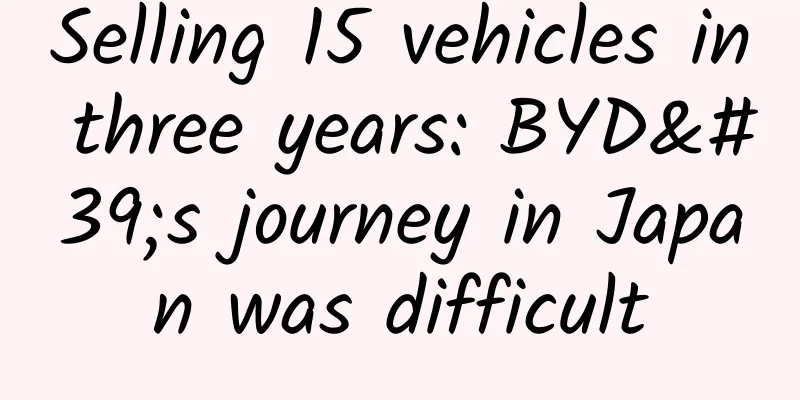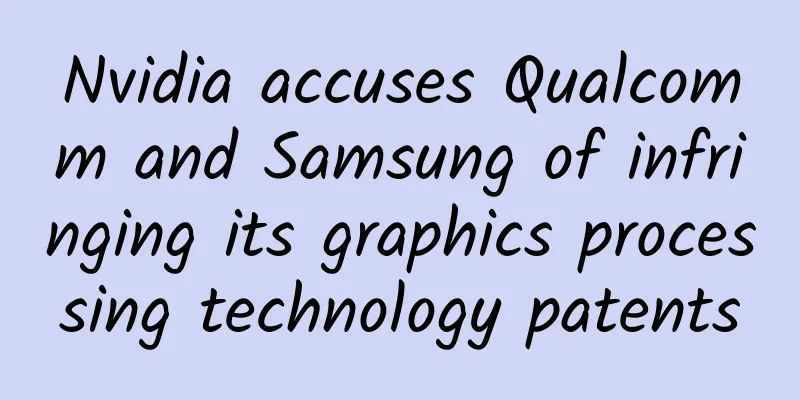Selling 15 vehicles in three years: BYD's journey in Japan was difficult

|
On December 1, 2017, BYD held a delivery ceremony for its pure electric bus (K9) in Okinawa, Japan. Dozens of Chinese and Japanese entrepreneurs attended the ceremony, representatives from the Chinese Embassy in Japan and the Japanese Ministry of the Environment delivered speeches, and the organizers also invited nearly 50 Chinese and Japanese media. With such a big order, how big is the batch? 10 vehicles! In the first three quarters of 2017, BYD's revenue was 73.92 billion yuan. Is it a big deal for this order with a value of less than 40 million yuan? This is the second batch of K9s sold by BYD in Japan. The first batch of 5 vehicles was delivered in Kyoto, Japan in February 2015. From February 2015 to December 2017, BYD sold a total of 15 K9s in Japan. In 2016, Toyota, Nissan, Honda and other eight major brands produced 27.22 million vehicles worldwide (18.72 million of which were produced outside Japan), while domestic car production and sales in Japan were 9.2 million and 4.97 million respectively. 46% of Japanese "domestic cars" must leave their homeland, so it is easy to imagine how difficult it is for American and German cars to squeeze into this market. Chinese car manufacturers selling cars in Japan is like going to the Maotai Distillery to sell "Niulanshan Erguotou" to the masters. If they don't get bombed, they are lucky. Why is BYD so persistent in expanding into Japan? Why is it using the K9 to lead the way? What is the significance of its three years of hard work? Proof of original intention Although the “market-for-technology” policy has been in place for decades, and joint ventures have firmly occupied the mainstream of the domestic automobile market, everyone knows that they are far behind foreign companies in technology. It is an indisputable fact that pure domestic brands are inferior to joint ventures in technology. In this context, it is unrealistic for BYD to catch up with domestic and foreign giants in the field of fuel vehicles. Moreover, major automobile producing countries have put the ban on fuel vehicles on the agenda one after another, and it is not wise to invest too much time and energy in this field. So what is BYD’s original intention in making cars? BYD's entry into the automotive manufacturing sector was seriously questioned when it acquired Beijing Jeep's Jichi Mould Factory in 2002 and Qinchuan Automobile in 2003. Its stock price plummeted, with the largest single-day drop reaching 50%. In this critical situation, Wang Chuanfu repeatedly explained to investors: "In three years, BYD's battery manufacturing will reach its peak and it needs to find other industries to expand"; "BYD has always planned to produce electric vehicles. With the Qinchuan platform, BYD's electric vehicle industrialization process will be accelerated by 2 to 3 years"; "If we only promote the automotive battery project by cooperating with car manufacturers, it will not only affect the process, but BYD will also not be able to take the initiative." Wang Chuanfu’s original intention was to build electric cars! He once told the media: "We are still not comparable to the world's leading companies in traditional automotive technology, but once our electric cars come out, they will short-circuit their core technologies such as engines, gearboxes, and four-wheel drive, and surpass them by leaps and bounds." But making a car is not as simple as tying batteries, motors and wheels to a sofa and then adding a cover. Wang Chuanfu knew this very well and did not short-circuit core technologies such as "engines and gearboxes". He did not "leap" but took the dumbest approach - making fuel vehicles first, and explored the entire automotive industry chain, from design, mold making, component production to vehicle sales system and after-sales service network. More than a decade later, a Chinese private enterprise boss also said he wanted to build electric cars. He directly fenced off land in the United States with barbed wire (but did not start construction), hired dozens of people, and played a PPT at a grand press conference, saying that he would invest tens of billions... #Whether they are serious about building electric cars depends on their actions# According to statistics, as of the end of June 2017, BYD had sold a total of 4.05 million vehicles. 4.05 million vehicles is nothing, Toyota Corolla's global sales have exceeded 40 million. But when BYD acquired Qinchuan Automobile in 2003, it was seen by everyone as "a battery king who knows nothing about cars." After selling more than 4 million vehicles, can it still be said that BYD "knows nothing" about cars? The consecutive doubling of sales in 2006, 2007 and 2008 made Wang Chuanfu optimistic that BYD could create miracles in the field of fuel vehicles, but he did not forget his original intention. After twelve years of sales, the F3 can still maintain a monthly sales volume of 10,000 units. If a new generation model of the same level as the F3 is produced, it can easily enter the top ten of the best-selling list (the threshold is about 230,000 units per year), and BYD's choice is to concentrate resources on new energy vehicles. In 2016, BYD's sales of new energy passenger vehicles exceeded 100,000 units, and it retained its title of global new energy vehicle sales champion with a 13% market share (its market share was approximately 11% in 2015). From launching fuel-powered vehicles despite being "cut in half" in the beginning to now going all in on new energy vehicles, BYD's actions over the past 15 years have proven that "BYD plans to produce electric vehicles" is not a bluff and is worthy of the saying "stay true to your original aspiration and achieve your goal." Why K9 entered Japan Although BYD started very early in the field of electric vehicles, it is still very difficult to enter automobile powerhouses such as the United States and Japan. The success of K9 is related to certain natural properties of electric buses. First of all, the production and sales volume of buses is several orders of magnitude lower than that of sedans and SUVs. Usually, the break-even point of a fully automatic automobile production line is about 300,000 vehicles per year. In China, where the annual production and sales of automobiles exceed 28 million vehicles, only 34,100 large and medium-sized buses were sold from January to May 2017. Such an output cannot be produced on a production line and can only be "manufactured by hand". Moreover, the technicians who can build the chassis of large buses are very expensive, so Chinese companies have an opportunity. Secondly, electric buses are a niche market, and Toyota and Honda are still trying to take over the market share of fuel vehicles. Before BYD entered the market, all electric buses on the Japanese market were customized by users at modification factories. Liu Xueliang, general manager of BYD Asia Pacific Auto Sales Division, told Huxiu that before K9 entered Kyoto in 2015, the Japanese side held a hearing. Liu Xueliang originally planned to attend, but he did not go after learning that many of the participants were from Japanese auto giants. Later, he inquired and found that the atmosphere of the meeting was very friendly and K9 was allowed to enter the Japanese market. The Japanese auto giant's idea is nothing more than "Let the slow bird fly first" and wait until buses are electrified on a large scale. Japanese auto giants have the capital to be confident, and it is precisely this confidence that gives Chinese companies opportunities. Two years later, in 2017, BYD received another order for 10 K9s in Okinawa. The client was a ship agency company, Ships Agecny, whose main business was to provide "ground services" for cruise ships docked in Okinawa. After an 80,000-ton luxury cruise ship docked, about 4,000 tourists needed to be quickly transported to tourist attractions or shopping malls, and buses were the only available means of transportation. In preparation for the 2020 Olympics, Japan plans to expand or build six new piers, two of which in Okinawa can accommodate 200,000-ton ships. In response to the increased passenger demand, Ships Agecny plans to purchase 80 electric buses in succession, all of which will be K9 if nothing unexpected happens. Despite selling just 15 units and securing an order for 70, BYD in Japan is like the camel in the fable of "The Arab and the Camel" that "stuck its head into the tent." True internationalization will not happen overnight Despite all the advantages of timing, location and people, BYD K9's road to internationalization is still difficult, because true internationalization cannot be achieved overnight. In January 2011, taking advantage of the 26th World University Games, 200 K9s were put into trial operation in Shenzhen. In 2012, BYD launched trial operations in the Netherlands, Spain, Hungary, Austria, Belgium, the United States and other countries, and received orders from the Netherlands, Israel and other countries. In 2013, K9 obtained the EU WVTA vehicle certification and was officially approved for sale in the EU. The UK, France, Germany and other countries were added to the trial operation list. Since Japan adopts EU standards for buses, BYD has obtained a pass to enter Japan. On January 9, 2014, after two months of testing, the New York Metropolitan Transportation Authority released a test report that affirmed the technical performance of K9. In April 2015, BYD's internationalization journey achieved a major breakthrough when the Long Beach Transportation Authority, a bus operator in California, ordered 60 K9s at a total price of US$44.96 million (average price of US$750,000), setting a record for the amount of orders for electric buses in the United States. K9 sales exceeded 4,500 units that year. In April 2016, Shenzhen Public Transport ordered more than 3,000 electric buses from BYD, with a value of RMB 4.466 billion (average price RMB 1.5 million). In 2015, K9 sales exceeded 10,000 units. In the first half of 2017, we received orders from Sydney Airport and Brisbane, totaling 51 vehicles. It took less than half a year for Mobike and ofo to enter 180 cities worldwide from announcing their “internationalization”. However, it took K9 five years from its overseas expansion in 2012 to entering 200 cities in more than 50 countries. When entering new countries and cities, BYD does not sell buses but "new energy overall solutions". Not only do the vehicles need to be customized, but they also need to comprehensively solve problems such as charging, maintenance, consumables, and accessories. Some cities also require solutions to green energy acquisition (solar power generation) and storage (energy storage). According to Liu Xueliang, although K9 has been put into operation in developed countries such as Europe, the United States, and Japan, it will still face various problems when entering developing countries. For example, India requires “No air conditioning!” BYD: What to do when the weather is hot? Indian customer: The window must be able to be opened! The Indian side also arranged for the K9 to run on a 130-kilometer plateau road winding through the Himalayas for a three-month trial run before finally approving its import. Before entering Kyoto in 2015, BYD sent its R&D team to Japan to communicate with drivers, visit the fleet, and understand after-sales needs. Then they returned to Shenzhen to build the five K9s. The Okinawa customers visited BYD headquarters in Shenzhen, took a ride on the ubiquitous K9, and went to Kyoto to get the K9's operating data. Without EU certification, large-scale operations in Shenzhen, and good performance in Kyoto, K9 would not have won the Okinawa order so smoothly. Liu Xueliang told the media: "BYD's overseas expansion did not start from zero, but from a negative number." In the field of engineering construction, the completion of all projects below the reference plane (actually the first floor of the building) is called "the main project reaches zero." Liu Xueliang said that "overseas expansion starts from a negative number", which is like building a high-rise building: when K9 is put into operation in a city (even if there are only 5 vehicles), it means that BYD's "internationalization project" here has reached "positive and negative zero". As a winner of Toutiao's Qingyun Plan and Baijiahao's Bai+ Plan, the 2019 Baidu Digital Author of the Year, the Baijiahao's Most Popular Author in the Technology Field, the 2019 Sogou Technology and Culture Author, and the 2021 Baijiahao Quarterly Influential Creator, he has won many awards, including the 2013 Sohu Best Industry Media Person, the 2015 China New Media Entrepreneurship Competition Beijing Third Place, the 2015 Guangmang Experience Award, the 2015 China New Media Entrepreneurship Competition Finals Third Place, and the 2018 Baidu Dynamic Annual Powerful Celebrity. |
>>: BYD's journey to Japan was difficult after selling 15 cars in three years
Recommend
Tesla Roadster: A 10,000 Nm Scam
On November 17, 2017, the 15th Guangzhou Auto Sho...
How does Douyin e-commerce create a hit product?
Today, as the new consumer sector becomes increas...
How much does WeChat Mini Program certification cost? Is there any charge for WeChat Mini Program authentication?
Before businesses start developing WeChat mini-pr...
How to keep up with demand for primary product operations?
The product operation here refers to chivalrous p...
Mini Program Enterprise Entity Migration, How to Change the Entity of WeChat Mini Program?
Mini Program Enterprise Entity Migration, How to ...
Huang Renxun may visit Shanghai on June 6. Is there hope for large model companies in China?
Recently, there have been reports that Nvidia CEO...
Einstein's brain has 73% more matter than an average person! Scientists reveal the secret of a smart brain
When you mention the word "genius", who...
SEM promotion: How important is the idea? 80% of bidders die on this!
After reading this article, you can improve in th...
Why is it that the articles you write are very valuable but no one reposts them?
Take “Cool Play Lab”, an article with over 100,000...
How to create creative maternal and child advertising on Douyin? Learn about the 5 key words
How to do maternal and infant marketing on Douyin...
iOS WeChat is updated again, and you can set video cover in Moments
[[417600]] Previously, iOS WeChat released the of...
How to operate mini program data?
The mini program has been open for some time. Amo...
Advertising skills: Why do others get several times more clicks than you?
In this era where everyone is competing for atten...
Is laundry powder better or laundry liquid better? It turns out there are some considerations
When it comes to buying detergent, the choices ar...









